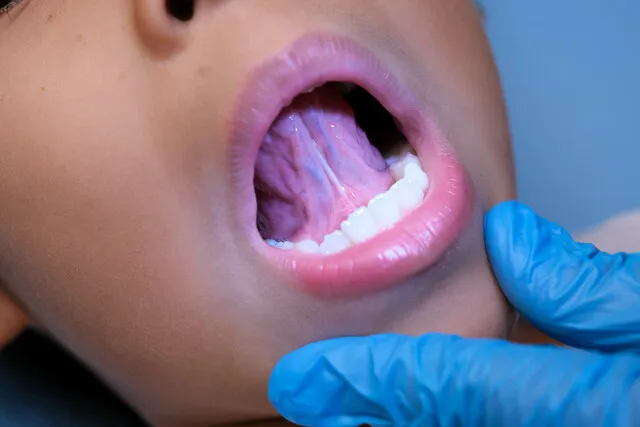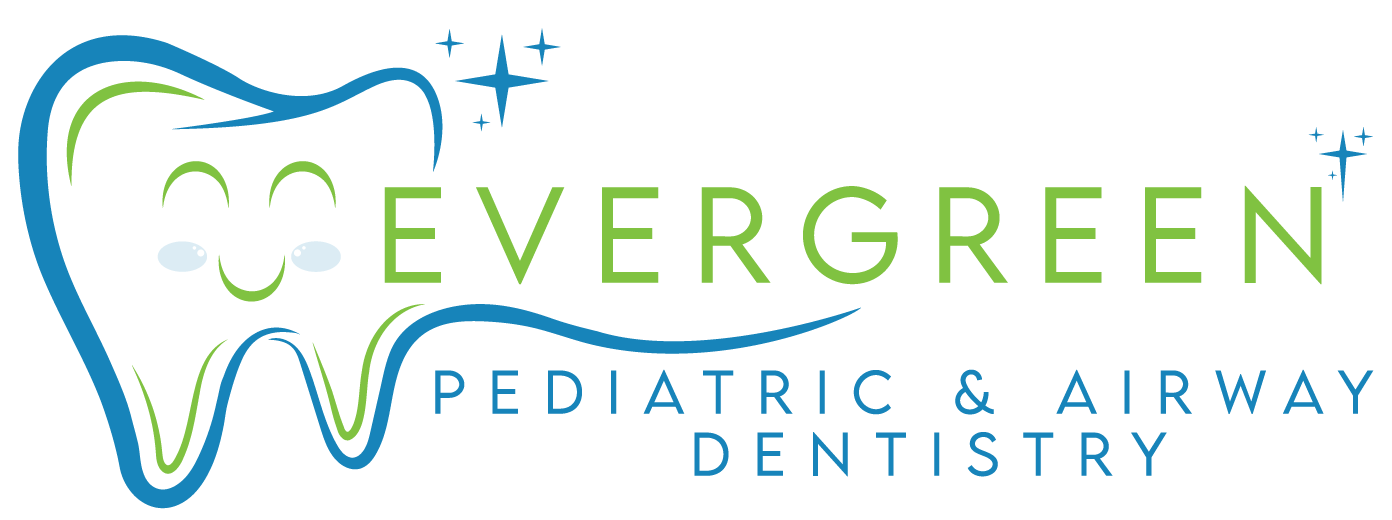Say Goodbye to Tongue Ties: Understanding the Benefits of Laser Infant Frenectomy
As parents, it’s natural to have questions or worries about our children’s health. One of the lesser known concerns is infant tongue-tie, and for many families this affliction carries a host of problems that can affect both their baby’s development and their quality of life. However there is hope! The emergence of laser infant frenectomy (LIF) as a viable treatment option has opened the door to restoring oral function in babies with restricted tongues – an invaluable tool in helping them reach milestone after milestone during those first few critical years. In this blog post we’ll explore what exactly LIF entails, why it might be beneficial for your child if they are experiencing any symptoms associated with tongue-ties, and how it could help alleviate some common complications resulting from these conditions.
What is a tongue tie and who can benefit from laser infant frenectomies
A tongue tie is a condition that occurs when the frenulum, which is a small piece of tissue located underneath the tongue, is too tight or too short, limiting the tongue’s range of motion and potentially causing various health and developmental problems. Tongue ties are relatively common in newborns and young infants, with estimates ranging from 4% to 10% of all infants having some form of tongue tie.
Infants with tongue ties may experience difficulty breastfeeding, which can lead to poor weight gain, frequent feedings, frustration, and pain for both the infant and mother. Some infants may also develop speech and language problems, as the tight frenulum makes it challenging to produce certain sounds and speak clearly. In severe cases, tongue ties can also cause dental and orthodontic issues, sleep apnea, and other health concerns.
Fortunately, a simple and effective solution to this problem is laser infant frenectomy, a minimally invasive procedure that involves using a special laser to precisely remove the tight or short frenulum. The benefits of laser infant frenectomy are numerous, including improved breastfeeding success and less pain for the infant and mother, improved speech and language development, reduced risk of dental and orthodontic issues, enhanced sleep quality, and a better overall quality of life.
Laser infant frenectomy has become increasingly popular in recent years due to its safety, effectiveness, and convenience. The procedure is quick, usually taking only a few minutes, and has a very low risk of complications. It can also be performed in an outpatient setting, without the need for general anesthesia, allowing infants to return home the same day.
The difference between traditional and laser frenectomies
Frenectomy is a common oral surgical procedure for removing a frenum, which are small folds of tissue that connect certain areas of the mouth to the lips, cheeks, and gums. Traditionally, frenectomy is performed using a scalpel or scissors, but nowadays, laser frenectomy has emerged as a less invasive alternative. Both procedures aim to address issues caused by frenums that are too thick, too short, or attached in the wrong place.
The key difference between traditional and laser frenectomy lies in the tool used to cut the frenum. In traditional frenectomy, the surgeon uses a sharp instrument to make incisions and then pulls the frenum away from the oral tissue. This method often causes bleeding, scarring, and discomfort for the patient, as well as a longer recovery time. Additionally, traditional frenectomy may require anesthesia or sedation for the patient to be comfortable.
On the other hand, laser frenectomy uses a specialized laser tool to vaporize the frenum tissue in a precise and gentle manner. This method offers several advantages over traditional frenectomy. Laser frenectomy is virtually painless and bloodless, as the laser cauterizes the tissue as it cuts, resulting in minimal bleeding and swelling. The laser also seals nerve endings, reducing pain and discomfort for the patient during and after the procedure. Furthermore, laser frenectomy has a shorter recovery time, allowing patients to resume their normal activities sooner.
In addition to its technical benefits, laser frenectomy also has aesthetic advantages. The laser tool emits a concentrated beam of light that creates very fine and precise incisions, resulting in a cleaner-looking wound. This means that even after healing, the incision scars are minimal and barely noticeable.

Infant Frenectomy
Pros and cons of a laser infant frenectomy
Laser infant frenectomy is a surgical procedure that aims to correct the condition of tongue-tie or lip-tie in newborn infants. This procedure is gaining popularity as it offers various advantages over traditional frenectomy techniques. However, like any other medical procedure, there are pros and cons of laser infant frenectomy. In this article, we will discuss these factors in more detail to help parents make informed decisions.
Pros of Laser Infant Frenectomy
- Safe procedure: Laser infant frenectomy is considered a safe procedure as it is minimally invasive and requires no general anesthesia. The laser used in this procedure is precise, targeting only the affected area, and does not damage surrounding tissues.
- Reduced bleeding: The laser used in this procedure cauterizes the wound as it cuts, making the procedure relatively bloodless. This property makes the procedure safer for the infant, reduces the risks of infections, and protects the doctor from exposure to blood-borne pathogens.
- Faster healing time: Laser infant frenectomy has a faster healing time compared to traditional methods because it causes less trauma to the surrounding tissues. The laser also seals the wound, which reduces the chances of infection and facilitates faster healing.
- Improved feeding: Tongue-tie or lip-tie can cause problems with breastfeeding. By performing laser infant frenectomy, the tongue or lip is freed, allowing the baby to latch on more effectively and improving the feeding experience of the baby.
Cons of Laser Infant Frenectomy
- Cost: Laser infant frenectomy is generally more expensive than traditional frenectomy techniques. This factor may limit access to this procedure for some families, especially those without insurance cover.
- No insurance coverage: Currently, many insurance companies don’t cover the cost of laser infant frenectomy. This factor may limit access to this procedure for some families, making traditional frenectomy techniques the only viable option.
- Limited availability: Laser infant frenectomy is a specialized procedure that requires highly trained professionals and specialized equipment. Not all dental or pediatric offices provide this service. Some parents may need to travel a considerable distance to access this procedure.
- Not always necessary: Not all infants with tongue-tie or lip-tie need a frenectomy. In some cases, mild tongue- or lip-tie may not cause problems with feeding and may not require treatment.
Common questions related to the procedure
During a laser infant frenectomy procedure, a special laser is used to precisely remove the excess tissue in a quick and minimally invasive manner. This technology ensures that there is minimal pain or discomfort and very little bleeding, making it an ideal option for infants. Additionally, lasers have the added benefit of cauterizing the incision, which reduces the risk of post-operative bleeding and infection.
Common questions related to the procedure of a laser infant frenectomy include the following:
How long does the procedure take?
The actual laser infant frenectomy procedure typically only takes a few minutes to complete, though the preparation and recovery process may take longer. Parents should plan to spend a total of about 30-60 minutes in the office for the entire procedure.
Can my baby eat or drink before the procedure?
Most doctors recommend that infants do not eat or drink anything for a few hours prior to the procedure to help ensure a comfortable and safe experience.
Is anesthesia used during a laser infant frenectomy?
For most infants, no anesthesia is needed during the procedure as the laser itself is virtually painless. However, a topical numbing agent may be used to help make the infant more comfortable during the procedure.
How long does it take for my baby to recover from a laser infant frenectomy?
Most infants recover very quickly from a laser infant frenectomy, with many resuming normal feeding and activity levels within just a few hours or days. However, parents should follow their doctor’s instructions carefully to help ensure a smooth and speedy recovery.
How to prepare for a laser infant frenectomy
Preparing for a laser infant frenectomy is an important process that requires careful planning and consideration. As a parent, it is important to understand the procedure, its benefits, and the steps involved in preparing your child for the surgery.
First and foremost, it is crucial to find a reputable and experienced dentist or pediatrician who specializes in laser frenectomy procedures. This will ensure that your child receives the best possible care during and after the surgery. You should also schedule a consultation with the provider to discuss any concerns or questions you may have about the procedure.
Prior to the surgery, the provider will typically advise to limit food and drink intake for a specified period of time. This is essential to ensure that the child’s stomach is empty during the surgery, which will reduce the risk of complications during and after the procedure. In addition, it is important to follow the provider’s instructions on any medication that your child may need to take prior to the procedure.
On the day of the surgery, it is recommended that you dress your child in loose, comfortable clothing and bring along any pacifiers or comfort items that may help soothe them during the procedure. You may also be advised to bring along a diaper bag with any necessary supplies to keep your child comfortable and clean after the surgery.
It is also important to have a plan for transportation to and from the surgery, as your child may need to rest and recover in the hours following the procedure. To help your child feel more at ease, you may want to bring along a favorite toy or book to help distract them from any discomfort they may be experiencing.
Aftercare instructions for parents following the procedure
Laser infant frenectomies are a relatively quick and safe procedure that are commonly used to treat lip and tongue ties in infants. While the actual procedure may only take a few minutes, it is important for parents to properly care for their child following the surgery to ensure a smooth recovery process.
Immediately following the procedure, your baby may be fussy or appear uncomfortable due to the numbing agent wearing off. This is completely normal and can be managed with over-the-counter pain medication such as acetaminophen or ibuprofen. It is important to administer these medications as directed by your doctor.
To help minimize swelling and discomfort, apply a cool compress to the affected area for 10 to 15 minutes at a time. Gently massaging the area with your finger can also be helpful in reducing any tension or tightness.
In the days following the surgery, it is important to keep the affected area clean and dry. This can be achieved by gently wiping the area with a clean, damp cloth after feedings or providing your baby with a pacifier to soothe any discomfort without further irritating the area.
It is important to continue feeding your baby normally following the procedure, as breastfeeding can actually help promote healing. However, it is important to keep an eye out for any signs of infection such as fever or excessive redness and to contact your doctor immediately if you notice any concerning symptoms.

Tongue Tie
Resources available in case of any complications or further questions
In the event of any complications or concerns related to laser infant frenectomies, it is important to have access to reliable resources that can provide support and guidance. Fortunately, there are a number of resources available to parents and medical professionals alike.
One such resource is the International Affiliation of Tongue-Tie Professionals (IATP), which is a professional organization dedicated to fostering education, research, and collaboration related to tongue-tie and other oral restrictions. The IATP offers a directory of trained and certified providers who specialize in laser frenectomy, as well as a wealth of information and resources for parents seeking information about the procedure.
Other valuable resources include peer-reviewed medical journals such as the Journal of Clinical Pediatrics Dentistry and the Journal of Dentistry for Children, which publish rigorous research on the outcomes of laser frenectomy and other related procedures. Medical professionals may also consult with colleagues who have experience performing laser frenectomy, as well as seek guidance from professional organizations such as the American Academy of Pediatric Dentistry and the American Dental Association.
In addition to these resources, parents can find support and guidance from online communities, such as the Tongue Tie Babies Support Group on Facebook, where parents can connect with other families who have experienced similar challenges and share information and advice.
Overall, a laser infant frenectomy is an incredibly helpful procedure for both infants and parents alike. Although the decision to get the procedure can be difficult to make, the benefits often outweigh any drawbacks. Researching all of your options, understanding all of the risks, and talking through them with your doctor will help you make the decision that is best for your little one. Aftercare instructions are essential to ensure that healing progresses as expected and complications are avoided. Don’t hesitate to look into community services available if needed or contact agencies knowledgeable about this type of procedure. Many may provide further resources and answer any questions that may arise in order to put parents’ minds at ease and ensure their child is receiving the best care possible. If you are considering a laser infant frenectomy for your child, take action today and talk to your doctor about it!
Evergreen Pediatric Dentistry
https://www.google.com/maps?cid=14720788683151219551
12910 Totem Lake Blvd NE #103, Kirkland, WA 98034, United States
(425) 814-3196
https://evergreenkidsdentist.com/


